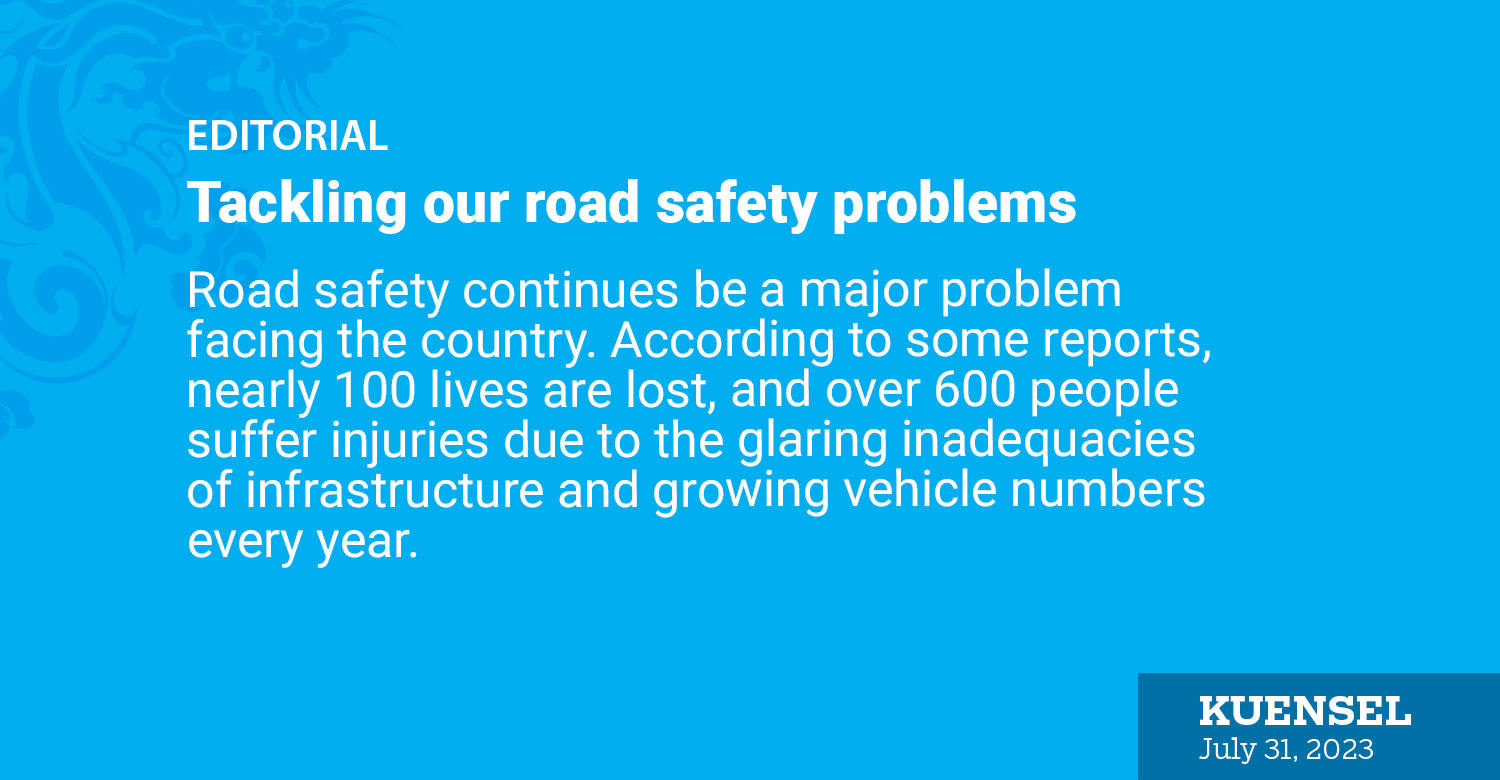Road safety continues be a major problem facing the country. According to some reports, nearly 100 lives are lost, and over 600 people suffer injuries due to the glaring inadequacies of infrastructure and growing vehicle numbers every year.
This alarming toll demands immediate action. There is a need for us to rise to the challenge and implement sweeping reforms to ensure the safety of its citizens on the roads.
At the core of this crisis is a web of issues, ranging from faulty road engineering and bad junction design to the lack of adequate signage and road markings. These deficiencies create a perfect storm for disaster, jeopardising the lives of countless people every day.
The time for complacency is long past, and the authorities must recognise the urgency of the situation and prioritise road safety as a national imperative.
A comprehensive review and upgrade of road engineering practices are imperative. Roads must be designed to accommodate growing vehicle numbers while considering the unique topography of the country. Steep inclines, sharp bends, and narrow passages necessitate thoughtful planning and execution. By investing in modern road infrastructure, we can alleviate the strain on existing roads and significantly reduce the occurrence of accidents.
An alarming number of accidents occur at junctions, where poor design and visibility lead to confusion and chaos for motorists. By adopting internationally recognised junction design principles, we can create safer intersections, reducing the potential for collisions and improving the overall traffic flow.
Furthermore, inadequate signage and road markings are an invitation to disaster, as residents of Gelephu recently brought to light. Clear and visible signs are crucial in guiding drivers, especially in challenging terrains where navigation can be complex. Investing in advanced road marking technologies and ensuring their maintenance can drastically reduce the number of accidents caused by confusion and ambiguity on the roads.
To address these challenges, the government must take a collaborative approach, involving road safety experts, urban planners, engineers, and the public. This multi-stakeholder effort can help identify problem areas, develop sustainable solutions, and ensure a higher level of compliance with road safety regulations.
Public awareness campaigns and education on road safety are pivotal to foster a culture of responsible driving. Citizens must be equipped with the knowledge and understanding of safe driving practices, including the importance of seatbelts, speed limits, and respecting traffic rules. Introducing defensive driving courses and stricter licensing requirements can help produce more responsible drivers.
Investing in road safety measures might seem financially burdensome, but the cost of inaction far outweighs any short-term expenditures. The loss of human lives, the emotional trauma inflicted on families, and the drain on the economy from injuries and medical costs are substantial burdens that cannot be ignored.
We stand at a crossroads faced with a grave road safety crisis that demands immediate action. The government must lead the charge by prioritising road safety as a top national concern.


